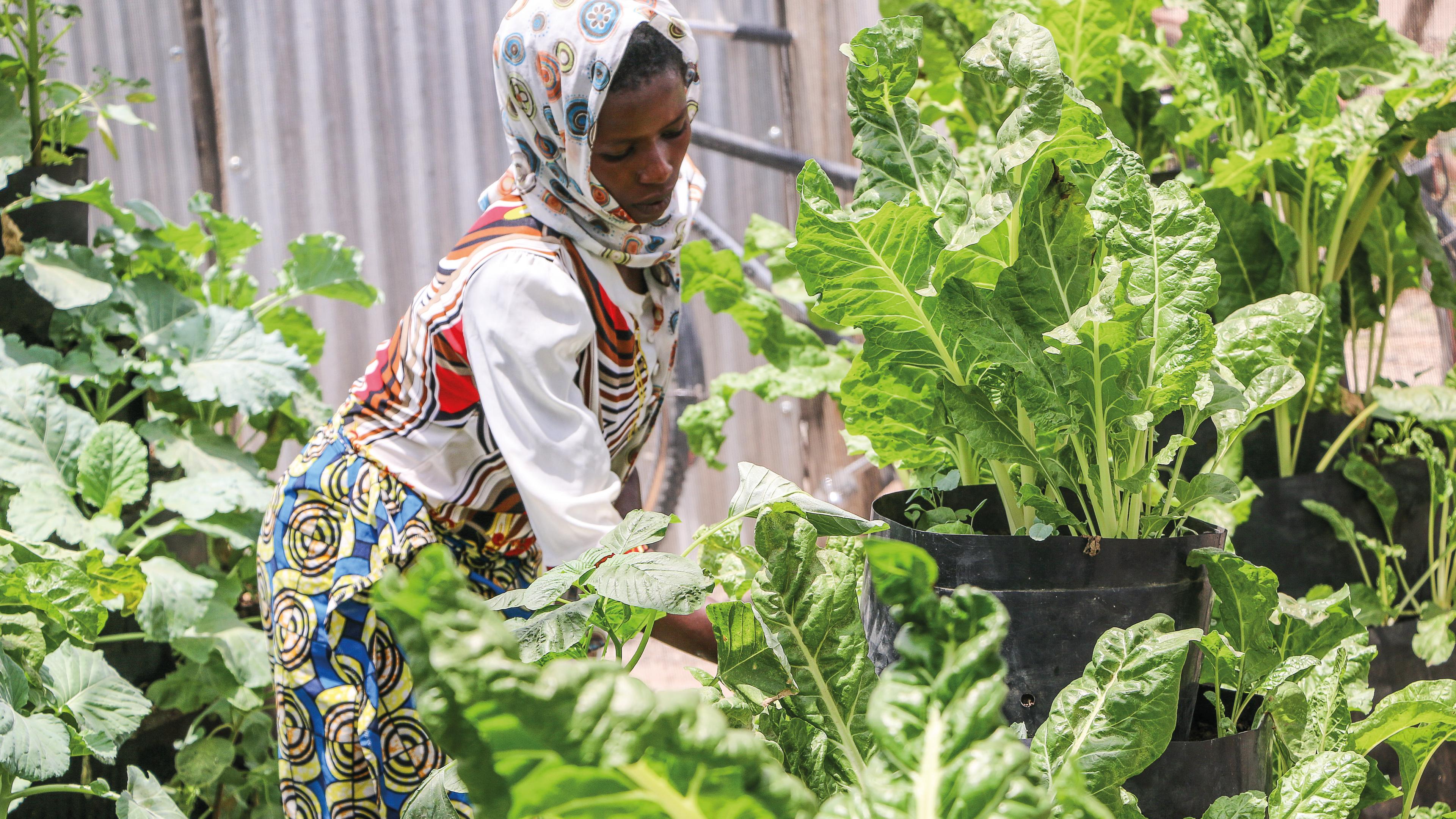Blended finance model to scale low-tech hydroponics
 © WFP/William Orlale
© WFP/William OrlaleWhat is the humanitarian challenge?
In Kenya, only 2% of food consumed in urban areas is from its own production. This makes the low-income urban population highly dependent on purchased food and vulnerable to hikes in food prices and disruptions to food distribution chains. Urban food production can offer an important safety net for low-income households, who spend, on average, up to half of their income on food.
What is innovative about the project?
Hydroponics is a technique of growing plants without soil. It is a subcategory of hydroculture, which uses mineral nutrients solutions to grow plants. There are many early-stage hydroponics projects in humanitarian operations, but the sector experiences challenges in scaling successful solutions. WFP is tackling these challenges through an innovative financing model, leveraging an existing strong global community of practice, and engaging the private sector to scale low-tech hydroponics.
WFPs pilot in Kenya in 2019 was implemented by the WFP Innovation Accelerator together with the company Hydroponics Africa and reached 1,500 beneficiaries. The learnings from the pilot confirmed that the technique uses 82% to 92% less water, 75% less space, and had 7 to 8 times faster growth cycles compared to conventional farming methods. As part of this initiative, WFP has created the H2Grow Platform as a digital space to bring together the global community of practitioners and technical experts. The community members can use the platform to share good practices and technical guidance to promote scale and advocate globally for the hydroponics technique, and to build a global alliance of partners.
What are the expected outcomes?
This project will equip vulnerable communities in urban areas with the necessary skills, materials and linkages to the market to become micro-entrepreneurs and increase their income. The selected beneficiaries become hydroponics farmers and will be able to harvest fresh vegetables all-year around on their 120sqm production surface. They will be able to leverage space within urban areas that could otherwise not be used for agriculture. Based on data from the pilot phase the harvest will generate an approximate yearly income per household of US$ 1,235 and a gross profit of US$ 806 per year. The project will especially target women and youth groups in the informal settlements in Kenya. Approximately 1,000 beneficiaries are expected to benefit from the hydroponics project. This intervention is expected to become part of post Covid measures to support livelihoods and as an exit strategy for the current WFP Covid-19 urban response Programme.
Who are the project partners?
This project is a collaboration between UN World Food Programme and Hydroponics Africa.